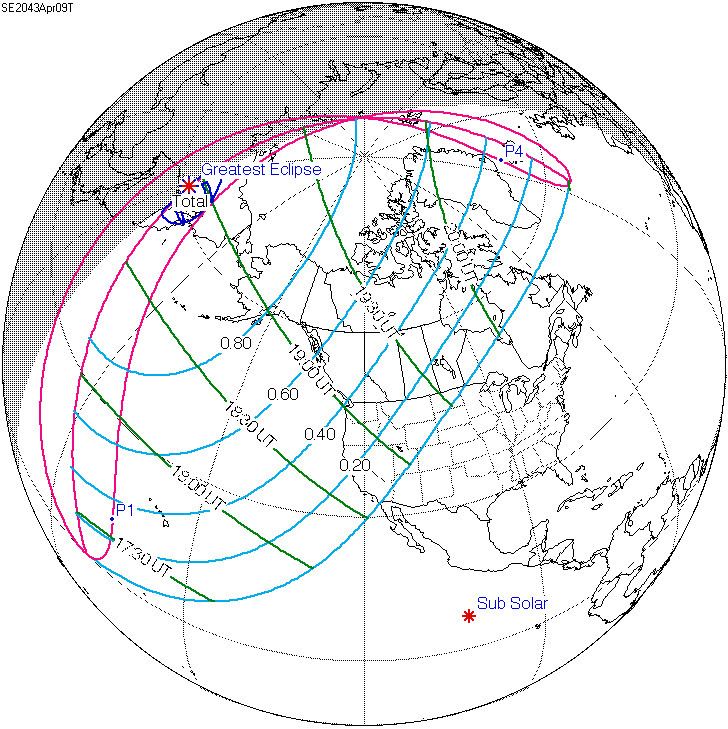Nature Total Magnitude 1.0095 Greatest eclipse 18:57:49 Start date April 9, 2043 | Gamma 1.0031 Max. width of band - km Saros 149 (22 of 71) | |
 | ||
A total solar eclipse will occur on April 9, 2043. A solar eclipse occurs when the Moon passes between Earth and the Sun, thereby totally or partly obscuring the image of the Sun for a viewer on Earth. A total solar eclipse occurs when the Moon's apparent diameter is larger than the Sun's, blocking all direct sunlight, turning day into darkness. Totality occurs in a narrow path across Earth's surface, with the partial solar eclipse visible over a surrounding region thousands of kilometres wide. It will be unusual in that while it is a total solar eclipse, it is not a central solar eclipse.
Contents
Visibility
It will be seen fully from Russia's Kamchatka Peninsula. It will be visible partially throughout Canada, Greenland and Iceland. It will be also partially visible from the western part United States including Alaska and Hawaii.
Images
Animated path
Solar eclipses of 2040-2043
Each member in a semester series of solar eclipses repeats approximately every 177 days and 4 hours (a semester) at alternating nodes of the Moon's orbit.
Metonic series
The metonic series repeats eclipses every 19 years (6939.69 days), lasting about 5 cycles. Eclipses occur in nearly the same calendar date. In addition the octon subseries repeats 1/5 of that or every 3.8 years (1387.94 days).
